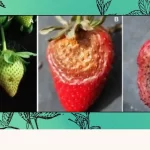Pseudomonas cichorii
Introduction
Bacterial leaf blight caused by Pseudomonas cichorii is a significant disease affecting many crops and ornamental plants. Here’s an overview of this pathogen and its impact.
P. cichorii has a broad host range and has been reported in numerous countries:
- Ornamental Plants: Chrysanthemum, Gerbera, Monstera adansonii, Calceolaria hybrida (pocketbook plant), aglaonema (Aglaonema spp. Schott), and more
- Medicinal Plants: Pinellia ternata (Banxia)
- Vegetable Crops: Romaine lettuce, butterhead lettuce, escarole, perilla, basil, sage
The pathogen has been reported in various locations, including:
- Hawaii, USA – 100% of variegated specimens of Monstera adansonii were infected in a nursery
- China – A 35-40% incidence rate was observed in a 4-ha field of Banxia
- South Korea – approximately 30-50% incidence was reported in perilla fields in South Korea
- New Jersey, USA – outbreak on sweet basil during the summer of 2018, and it was also observed on mature romaine leaves and escarole
- Belgium – outbreaks of midrib rot have increasingly threatened greenhouse butterhead lettuce since the mid 1990s
- Taiwan – 20% of the plants exhibited symptoms in a nursery on December 2022
We provide great overviews of many agricultural microorganisms. Subscribe to stay updated!
Symptoms
The symptoms of bacterial leaf blight caused by P. cichorii can vary depending on the host plant but generally include:
- Yellow chlorotic lesions that progress to greyish-black and brown necrotic lesions
- Water-soaked edges and irregular lesions
- Vein necrosis in some plants, such as perilla
- Mid-rib rot, Leaf spots, and necrosis in lettuce varieties
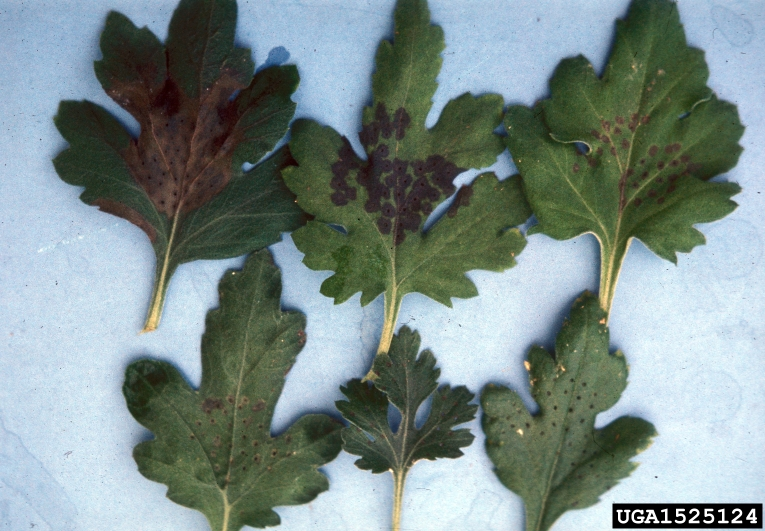
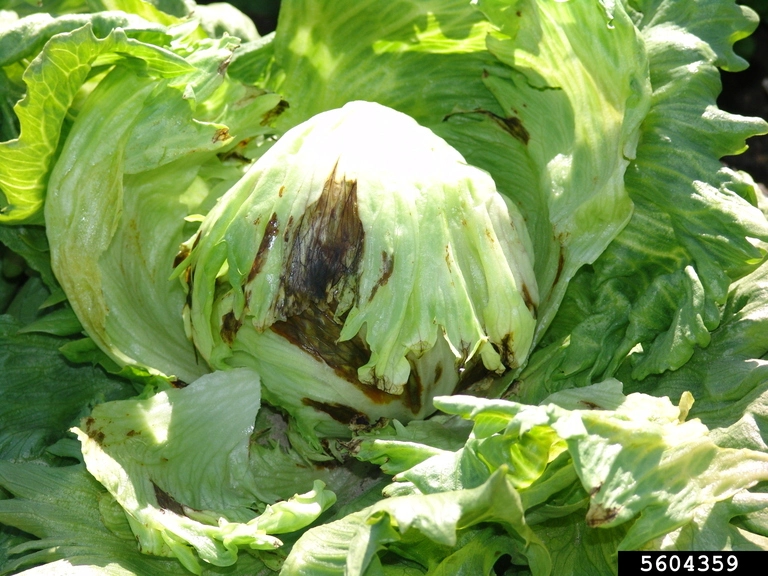
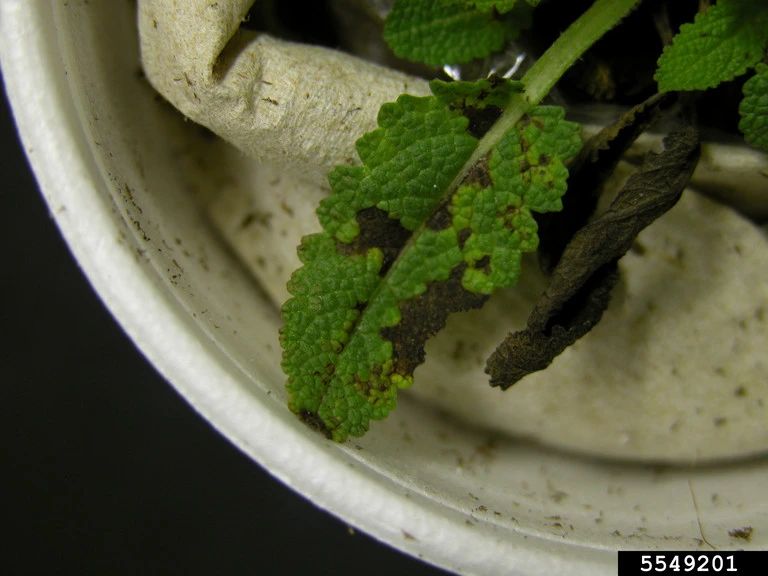
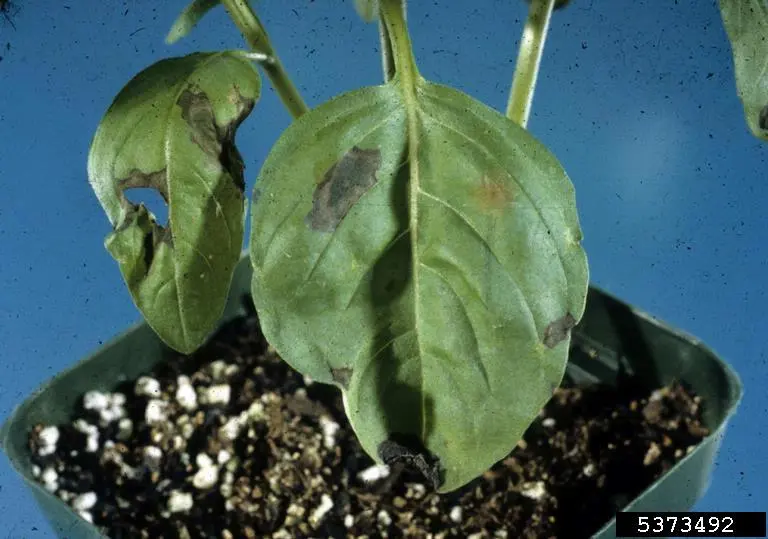
Transmission and Spread
P. cichorii can spread through:
- Water droplets from irrigation systems
- High humidity and increased leaf wetness
Control Measures
Several control strategies have been suggested for managing bacterial leaf blight:
- Resistant Varieties:
- For example, the use of tolerant chrysanthemum varieties such as Puspita Nusantara, Puspa Kania, and Dwina Kencana
- Early detection:
- Using lab methods to confirm symptoms
- Irrigation water is suspected to be the primary source of inoculum in greenhouse settings
- Cultural Practices:
- Removing infected leaves
- Watering plants strategically to reduce leaf wetness duration
- Chemical Control:
- Application of synthetic bactericides containing hydrogen peroxide and peroxyacetic acid
Must Read:
- Compatibility of antagonistic bacteria in controlling bacterial leaf blight (Pseudomonas cichorii) in chrysanthemum https://www.actahort.org/books/1334/1334_22.htm
- First report of bacterial leaf spot caused by Pseudomonas cichorii on Monstera adansonii in Hawai’i, USA https://pubmed.ncbi.nlm.nih.gov/37700479/
- First report of Pseudomonas cichorii causing bacterial leaf blight of pocketbook plant (Calceolaria hybrida) in Taiwan https://pubmed.ncbi.nlm.nih.gov/38587801/
- Pseudomonas cichorii causing leaf spot disease on Banxia (Pinellia ternata) in China https://pubmed.ncbi.nlm.nih.gov/35442052/
- First Report of Pseudomonas cichorii Causing Bacterial vein necrosis on Perilla Plants [ Perilla frutescens (L.) Britton.] in South Korea https://pubmed.ncbi.nlm.nih.gov/35700520/
- First Report of Pseudomonas cichorii Causing Bacterial Leaf Spot on Romaine Lettuce (Lactuca sativa var . longifolia) and Escarole (Cichorium endivia) in New Jersey https://pubmed.ncbi.nlm.nih.gov/34236210/
- Development of a real-time PCR assay for Pseudomonas cichorii, the causal agent of midrib rot in greenhouse-grown lettuce, and its detection in irrigating water https://bsppjournals.onlinelibrary.wiley.com/doi/full/10.1111/j.1365-3059.2010.02388.x
- Bacterial Leaf Blight Disease (Pseudomonas cichorii (Swingle 1925) (STAPP 1928) in Chrysanthemum (Dendranthema grandiflora Tzvelev) and Its Control) in Indonesia https://www.researchgate.net/publication/347620431_Bacterial_Leaf_Blight_Disease_Pseudomonas_cichorii_Swingle_1925_STAPP_1928_in_Chrysanthemum_Dendranthema_grandiflora_Tzvelev_and_Its_Control_in_Indonesia
![]()
David Santos is the CMO of Healthy Hydroponics InnoTech



